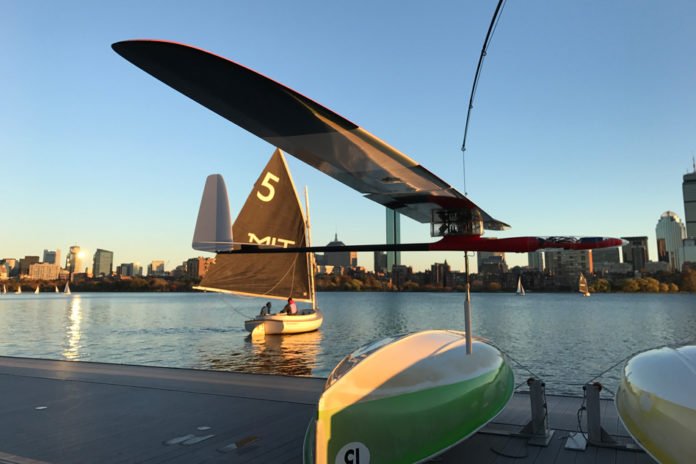MIT scientists have developed a robotic glider that can skim along the water’s surface, riding the wind like an albatross while also surfing the waves like a sailboat. It obtains from both nautical and biological plans, can cover a given separation utilizing 33% as much wind as an albatross and voyaging 10 times quicker than a commonplace sailboat.
The main purpose of this glider is to design a system that can remain soft in extreme conditions. It has a weight of around 6 pounds.
Gabriel Bousquet, a former postdoc in MIT’s Department of Aeronautics and Astronautics, who led the design of the robot as part of his graduate thesis. “In particular, it’s very important to understand the Southern Ocean and how it is interacting with climate change. But it’s very hard to get there. We can now use the energy from the environment in an efficient way to do this long-distance travel, with a system that remains small-scale.”
Scientists observed that the physics of albatross flight is fundamentally the same as that of sailboat travel. Both the albatross and the sailboat transfer momentum to continue moving. In any case, on account of the sailboat, that exchange happens not between layers of air, but rather between the air and water.
Bousquet, will present details of the robotic system this week at IEEE’s International Conference on Robotics and Automation, in Brisbane, Australia. His collaborators on the project are Jean-Jacques Slotine, professor of mechanical engineering and information sciences and of brain sciences; and Michael Triantafyllou, the Henry L. and Grace Doherty Professor in Ocean Science and Engineering.
The albatross does well with the previous, as its wings give normal lift, however it flies between air layers with a generally little distinction in wind speeds. Then, the sailboat exceeds expectations at the last mentioned, going between two mediums of altogether different paces — air versus water — however its body makes a considerable measure of rubbing and keeps it from getting much speed.
Bousquet pondered: What if a vehicle could be intended to perform well in the two measurements, wedding the fast characteristics of both the albatross and the sailboat?
The team drafted a design for such a hybrid vehicle, which ultimately resembled an autonomous glider with a 3-meter wingspan, similar to that of a typical albatross. They added a tall, triangular sail, as well as a slender, wing-like keel. They then performed some mathematical modeling to predict how such a design would travel.
As indicated by their estimations, the wind-powered vehicle would just need a generally calm wind of around 5 bunches to hurdle crosswise over waters at a speed of around 20 bunches, or 23 miles for every hour.
Bousquet said, “We found that in light winds you can travel about three to 10 times faster than a traditional sailboat, and you need about half as much wind as an albatross, to reach 20 knots. It’s very efficient, and you can travel very fast, even if there is not too much wind.”
The group constructed a model of their plan, utilizing a lightweight flyer airframe composed by Mark Drela, teacher of aeronautics and astronautics at MIT. To the base of the glider, they added a keel, alongside different instruments, for example, GPS, inertial estimation sensors, auto-pilot instrumentation, and ultrasound, to track the tallness of the lightweight plane over the water.
The researchers decided to test this “critical maneuver” — the act of transitioning between flying in the air and dipping the keel down to sail in the water. Accomplishing this move doesn’t necessarily require a sail, so Bousquet and his colleagues decided not to include one in order to simplify preliminary experiments.
In the fall of 2016, the team put its design to the test, launching the robot from the MIT Sailing Pavilion out onto the Charles River. As the robot lacked a sail and any mechanism to get it started, the team hung it from a fishing rod attached to a whaler boat. With this setup, the boat towed the robot along the river until it reached about 20 miles per hour, at which point the robot autonomously “took off,” riding the wind on its own.
Once the robot learned to fly autonomously, scientists decided to give a remote control to give the robot a “down” command. Next, they adjusted the direction of the keel and observed that the robot was able to steer away from the boat as expected.
Bousquet said, “We were flying very close to the surface, and there was a very little margin for error — everything had to be in place. So it was very high stress, but very exciting.”
The experiments prove that the team’s conceptual device can travel successfully, powered by the wind and the water. Eventually, he envisions fleets of such vehicles autonomously and efficiently monitoring large expanses of the ocean.
